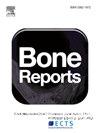机器学习辅助分类儿童脑瘫患者髋关节状况使用移动百分比测量
IF 2.6
Q3 ENDOCRINOLOGY & METABOLISM
引用次数: 0
摘要
髋关节移位是脑瘫(CP)儿童的重要问题,需要准确和及时的评估以防止长期并发症。本研究开发了一种支持向量机(SVM)模型,利用88张骨盆正位x线片上176个髋关节的移动百分比(MP)测量值对髋关节状况进行分类。MP值分为三组:正常(MP≤30%),危险(30% <;MP≤60%),脱位(MP >;60%)。使用分层k-fold交叉验证对SVM模型进行评估,以准确性、精密度、召回率和f1分数为关键指标。将其分类与骨科住院医师和儿科骨科医生进行的人工评估进行比较。该模型达到了92.898%的总体准确率,超过了人工评估的一致性和可靠性,特别是在识别脱位髋关节方面。统计分析显示,该模型的MP测量值与临床医生的测量值无显著差异,验证了其有效性。本研究强调了支持向量机模型在提高诊断准确性、减少评估变异性和支持临床决策方面的潜力。未来的研究应该扩展数据集,并纳入先进的机器学习模型,以进一步提高诊断精度。本文章由计算机程序翻译,如有差异,请以英文原文为准。
Machine learning-assisted classification of hip conditions in pediatric cerebral palsy patients using migration percentage measurements
Hip displacement is a significant concern in children with cerebral palsy (CP), necessitating accurate and timely assessment to prevent long-term complications. This study developed a support vector machine (SVM) model to classify hip conditions using migration percentage (MP) measurements obtained from 176 hips across 88 anteroposterior pelvic radiographs. MP values were categorized into three groups: normal (MP ≤ 30 %), risky (30 % < MP ≤ 60 %), and dislocated (MP > 60 %). The SVM model was evaluated using stratified k-fold cross-validation, with accuracy, precision, recall, and F1-scores as key metrics. Its classifications were compared to manual evaluations performed by an orthopedic resident and a pediatric orthopedic surgeon. The model achieved an overall accuracy of 92.898 %, surpassing the consistency and reliability of manual assessments, particularly in identifying dislocated hips. Statistical analysis showed no significant differences between the model's MP measurements and those of the clinicians, validating its effectiveness. This study highlights the potential of SVM models to enhance diagnostic accuracy, reduce variability in evaluations, and support clinical decision-making. Future research should expand the dataset and incorporate advanced machine learning models to further improve diagnostic precision.
求助全文
通过发布文献求助,成功后即可免费获取论文全文。
去求助
来源期刊

Bone Reports
Medicine-Orthopedics and Sports Medicine
CiteScore
4.30
自引率
4.00%
发文量
444
审稿时长
57 days
期刊介绍:
Bone Reports is an interdisciplinary forum for the rapid publication of Original Research Articles and Case Reports across basic, translational and clinical aspects of bone and mineral metabolism. The journal publishes papers that are scientifically sound, with the peer review process focused principally on verifying sound methodologies, and correct data analysis and interpretation. We welcome studies either replicating or failing to replicate a previous study, and null findings. We fulfil a critical and current need to enhance research by publishing reproducibility studies and null findings.
 求助内容:
求助内容: 应助结果提醒方式:
应助结果提醒方式:


